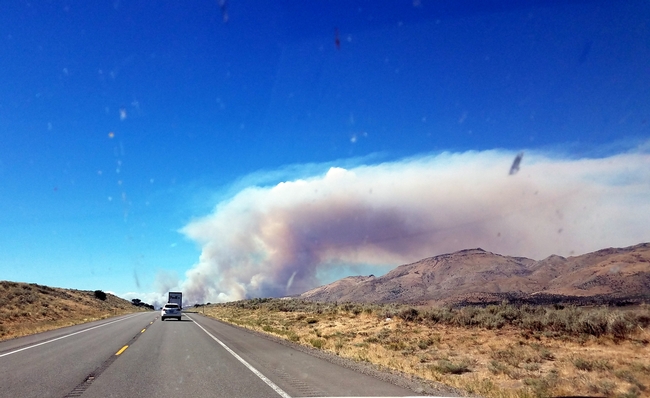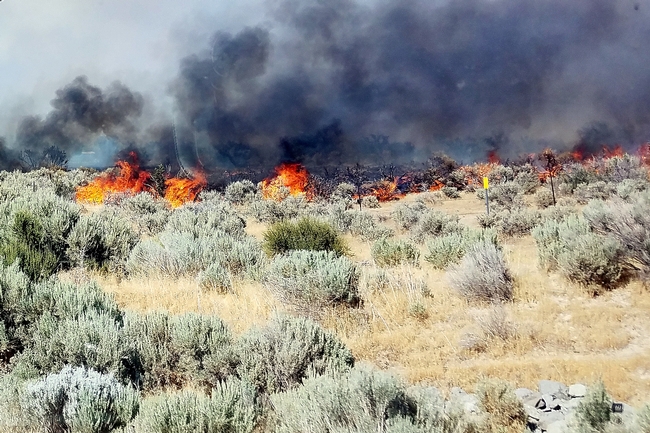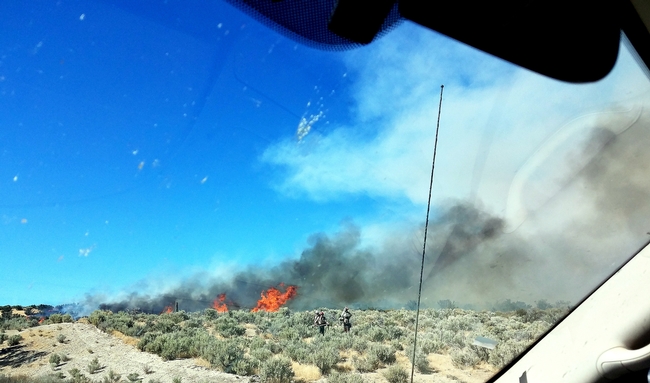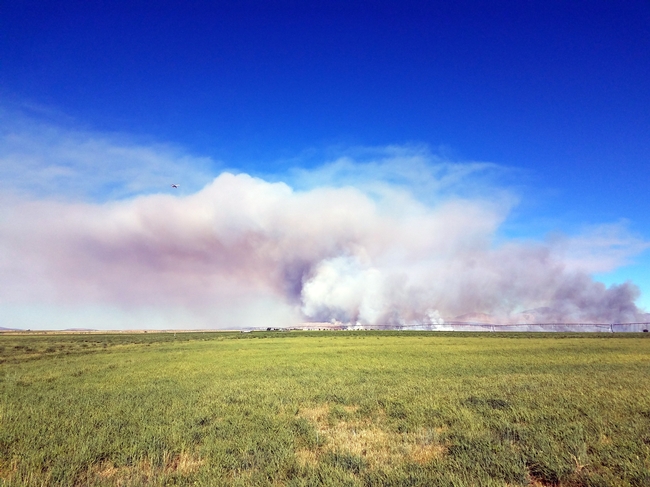There was a post written a few months ago by Rebecca Ozeran entitled “A Tale of Two Grasses,” describing her experiences with cheatgrass and contrasting its characteristics with another invasive annual, medusahead. It was an excellently written blog, and I encourage you to check it out!
//ucanr.edu/blogs/blogcore/postdetail.cfm?postnum=23889
As I rode my bike through a haze of smoke this morning, I decided it would be appropriate to describe the impacts I see this invasive annual having up in the northeastern corner of the state, because it is just about everywhere! (And I have some cool fire photos to share…) Cheatgrass (Bromus Tectorum L.) isn't just prolific in NE California, it is widely distributed throughout the continent, although the Great Basin is the poster child for invasion. Personally, I can't imagine what life would be like without this pesky grass, but one can dream. It has shaped and altered both agricultural practices and ecological functions within many systems in the Western US. Below is a map (courtesy of EDDMapS) of the current distribution throughout the states.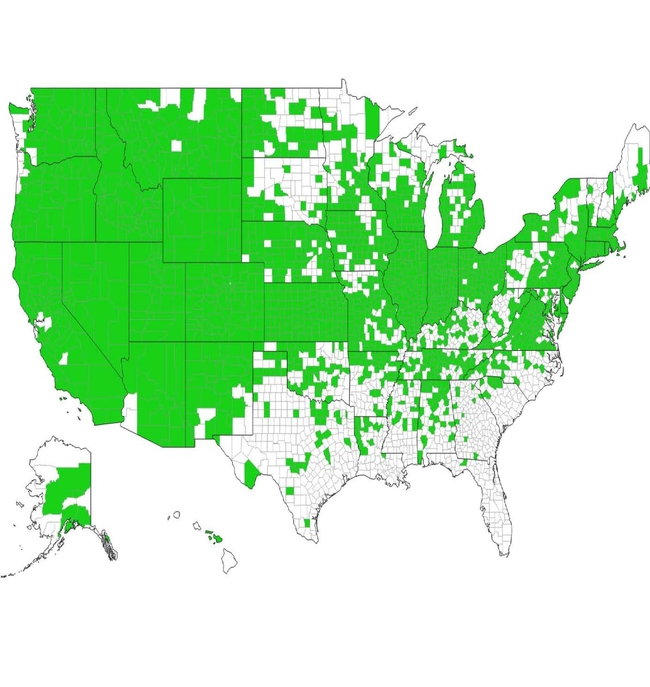
The literature states cheatgrass was most likely introduced to North America as a seed contaminate in grain from its home range in Eurasia. It was first identified in New York in 1861 and records indicated it was introduced to the northeastern region of California in the late 1800's.
But why is it an issue? Well, when I say it is everywhere, I am not kidding! It is a major pest in grain production from Kansas, up to the Dakotas, and all the way west to Washington. On rangeland it stretches south to Arizona. The winter annual lifecycle of cheatgrass matches well with fall planted grain, as it is able to gain a competitive edge on the crop. Up here in in Lassen, not only can it compete with grain crops but it is a major issue for hay producers, as the seed heads can get stuck in livestocks' mouths causing injury and infection. Hay contaminated with cheatgrass is often greatly devalued, understandably. Cheatgrass is a fierce competitor with many crops, not just grain and\ hay.
(Dense cheatgrass seedlings in alfalfa/orchardgrass field)
(Cheatgrass seed heads contaminating an alfalfa/orchardgrass hay field)
But, unlike many weeds which are either major agricultural pests or major wildland pests, cheatgrass is one of the worst in both arenas. As described by Rebecca's blog, cheatgrass has taken over large portions of rangelands throughout the Great Basin. However, it is not just an issue in range, but also a major issue in ponderosa pine ecosystems throughout Colorado, Arizona, and New Mexico.
Before I get too far, on a personal level, cheatgrass can be a real issue for hikers! The seeds of cheatgrass are relentless. They shed easily from mature plants, getting stuck in most fabrics, which can be painful and pokey. I have had tennis shoes and work gloves rendered useless because of cheatgrass seeds imbedded in the fabric. One of my professors in Colorado wouldn't venture into cheatgrass infested country without gaiters and single piece leather boots. It really is a brilliant dispersal system, as livestock, wildlife, and hikers like me, easily help distribute the seeds across the landscape.
But, complaining about seeds stuck in my shoes is petty compared to the other impacts cheatgrass has. Increased risk of wildfire is a major one! Smoke has settled down in the Honey Lake Valley multiple times this summer, often because cheatgrass has helped fuel fires consuming the range and forest. Cheatgrass is notorious for growing in the interspaces of perennial grasses, shrubs, and trees, growing fast and drying quick, providing feather thin fuel to rapidly carry fire between other types of vegetation. Often these cheatgrass-fueled fires burn more often than the historic fire regimes. This year, with the wet winter we had, provided ample opportunity for cheatgrass growth in the spring and fuel buildup for fires this summer. These fires annually burn thousands of acres of sagebrush, ponderosa forest, and perennial grasslands.
Below are pictures from the Long Valley fire when it started a few weeks ago. It started along the roadside just outside of Doyle in Lassen County. It proceeded to race over the Nevada border and torch nearly 83,000+ acres of rangeland and sagebrush between the two states. Two weeks ago, with thunderstorms we had throughout the region, the Modoc July complex fire was sparked in multiple locations. At the time of this writing, the fires have consumed 83,000 acres of timber, brush and grasslands in the Devil's Garden area. Much of the fine fuels in both of these fires have been composed of cheatgrass, along with other the invasive annual grasses medusahead and North African wire grass. One of the greatest impacts of these fires is that after they burn, cheatgrass is one of the first things to colonize, outcompeting the more desirable native vegetation. Other impacts include the cost of lost forage and timber, increased erosion potential, and suppression cost, just to name a few.
(Smoke plume from Long Valley fire on day of ignition)
(Long Valley fire in sagebrush/cheatgrass cover)
(Firefighters in front of the flame)
(Airtanker preparing to drop load on the fire (plane in top left corner above the plume))
Cheatgrass is one of the most studied invasive species because of the numerous impacts to society and ecological systems. There is plenty of literature out there if you would like to know more. A quick search on the UC Davis databases show at least 1400 scientific articles with reference to cheatgrass. And there are numerous management guides dealing with cheatgrass from many state institutions. If you have some time and interest in the impacts this grass has had on western landscapes, I highly recommend checking out the book “Cheatgrass: Fire and Forage on the Range” written by the former USDA range scientist, James Young, and Charlie Clements. It is great read describing cheatgrass invasion, the impacts, and entertaining stories surrounding the plant.
Sources indicate cheatgrass infests 101 million acres in our country, and while eradication is far beyond reach, targeted management is crucial to minimize negative impact.
Sources:
Young Jim, 2016. Invasive plants of California's wildland's: Bromus tectorum. California Invasive Plant Council website. Retrieved 2017 from www.cal-ipc.org
EDDMapS. 2017. Early Detection & Distribution Mapping System. The University of Georgia - Center for Invasive Species and Ecosystem Health. Available online at http://www.eddmaps.org/ last accessed August 2, 2017.
InciWeb. 2017. Incident information system: Long Valley fire and Modoc July complex fire. Retrieved August 2017 https://inciweb.nwcg.gov/incident/5354/ and https://inciweb.nwcg.gov/incident/5415/
Neese, E. 2006. “Cheatgrass:” Bromus Tectorum L. USDA NRCS Plant Guide. Accessed : http://www.gunnison.colostate.edu/agri/weeds/weed_docs/cheatgrass.pdf
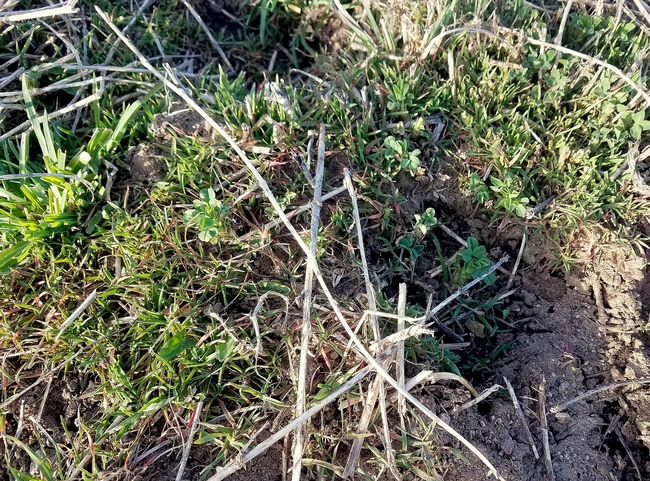
![DSC 0131g] DSC 0131g]](http://ucanr.edu/blogs/UCDWeedScience/blogfiles/45718.jpg)
